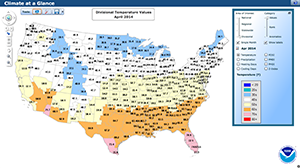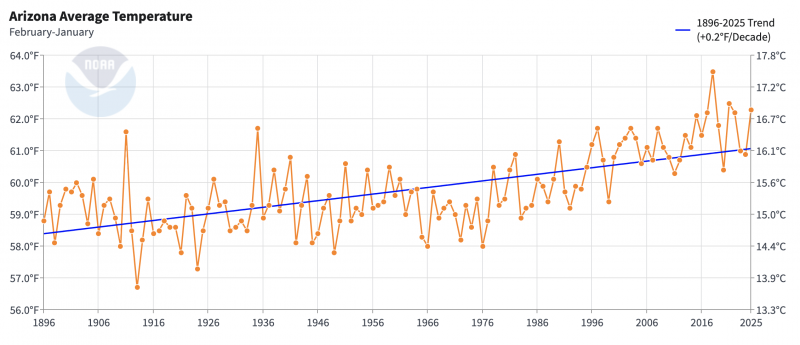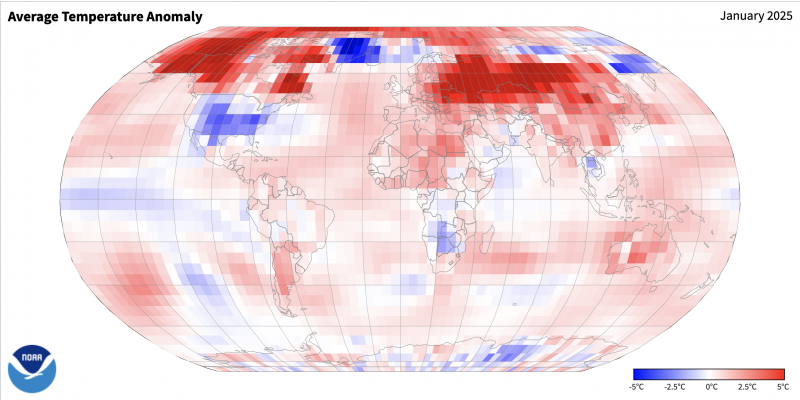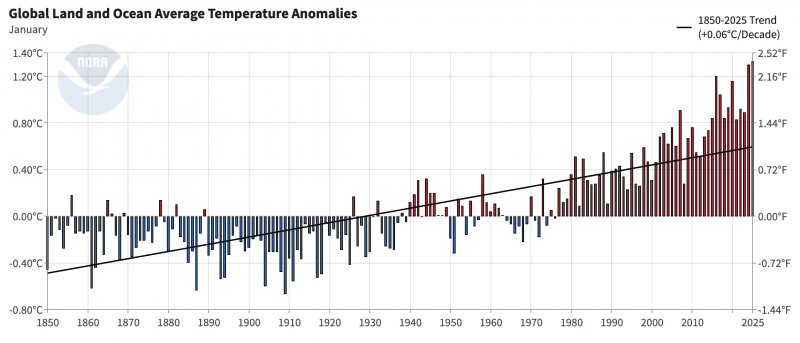Climate at a Glance
Climate at a Glance offers access to near-real-time analysis of monthly temperature and precipitation data. The set of tools can help users determine whether, and how much, a given location or area is warming or cooling over time, or if it is experiencing an overall change in precipitation.
Features of the site include:
U.S. mapping interface

Users can show monthly or yearly Values, Ranks, or Anomalies for Temperature, Precipitation, Heating days, Cooling days, and four drought indices. These records are available for National, Regional, Statewide, or Divisional extents.
Time series graphs for contiguous U.S, regions, states, and selected cities

National Centers for Environmental Information, Climate at a Glance
This tool generates time series graphs of Temperature, Precipitation, Heating Degree Days, Cooling Degree Days, and four drought indices. Users select spatial extents as large as the entire contiguous United States and as small as a city within it. Data are available for almost 200 selected cities.
Global temperature anomalies

National Centers for Environmental Information - Climate at a Glance
Global-scale maps of monthly and yearly temperature anomalies show where it was warmer or cooler than the long-term average from 1991 to 2020. Clicking any grid cell on the map produces a bar graph of annual temperature anomalies for that cell from the time data collection began at that location through the present.
Time series graphs for global temperature anomalies

National Centers for Environmental Information, Climate at a Glance
Values are calculated from land-based temperatures from the Global Historical Climatology Network-Monthly (GHCN-M) data set and sea-surface temperatures from the Extended Reconstructed Sea Surface Temperature dataset (ERSST v3b).



